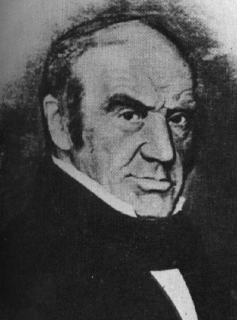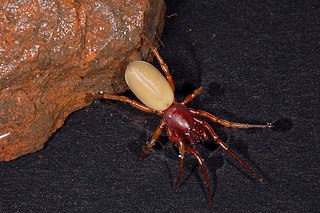
Dysderidae, also known as woodlouse hunters, sowbug-eating spiders, and cell spiders, is a family of araneomorph spiders first described by Carl Ludwig Koch in 1837. They are found primarily in Eurasia, extending into North Africa with very few species occurring in South America. Dysdera crocata is introduced into many regions of the world.

Velvet spiders (Eresidae) are a small group of almost totally Old World spiders. The characteristics of this family of spiders are that they are entelegyne, eight-eyed araneomorph spiders that build unkempt webs. They are cribellate. Some species are nearly eusocial, lacking only a specialized caste system and a queen. They cooperate in brood rearing, unlike most other spiders except for some African agelenid spiders in the genus Agelena and a few others.

Eresus, also called ladybird spiders, is a genus of velvet spiders that was first described by Charles Athanase Walckenaer in 1805. Members of the genus formerly called Eresus cinnaberinus or Eresus niger are now placed in one of three species: Eresus kollari, Eresus sandaliatus and Eresus moravicus.

Amycus is a genus of jumping spiders that was first described by Carl Ludwig Koch in 1846.

Dendryphantes is a genus of jumping spiders that was first described by Carl Ludwig Koch in 1837.

Euophrys is a genus of jumping spiders that was first described by Carl Ludwig Koch in 1834. The small black E. omnisuperstes lives on Mount Everest at elevations up to 6,700 meters, possibly making it the most elevated animal in the world.

Icius is a genus of jumping spiders described by Eugène Simon in 1876, belonging to the Order Araneae, Family Salticidae.
Leptorchestes is a spider genus of the Salticidae family. Like several other genera of salticids, it mimicks ants.

Phlegra is a genus of jumping spiders that was first described by Eugène Louis Simon in 1876. The name is a reference to a mythical location in both Greek and Roman mythology.

Plexippus is a genus of jumping spiders that was first described by Carl Ludwig Koch in 1846. It is considered a senior synonym of Hissarinus and Apamamia.

Salticus is a spider genus of the Salticidae family.
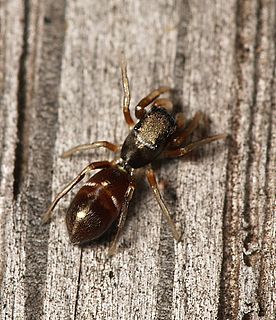
Synageles is a genus of jumping spiders that was first described by Eugène Louis Simon in 1876.

Ozyptila is a genus of rather small crab spiders.
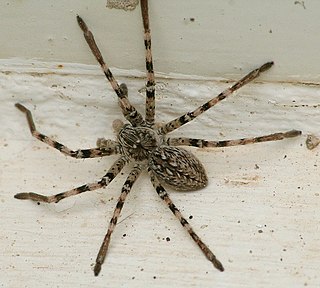
Eusparassus is a genus of huntsman spiders that was first described by Eugène Louis Simon in 1903.

Micaria is a genus of ground spiders that was first described by Niklas Westring in 1851. They are 1.3 to 6.5 millimetres long.
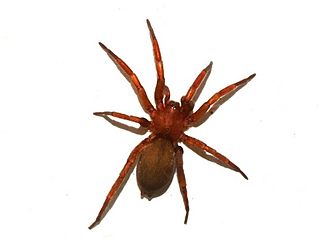
Haplodrassus is a genus of ground spiders that was first described by R. V. Chamberlin in 1922. They range from 3 to 10 millimetres. H. signifer is the most widespread species, found across North America except for Alaska and northern Canada.

Nomisia is a genus of ground spiders that was first described by R. de Dalmas in 1921.
Singa, also called striped orb-weavers, is a genus of orb-weaver spiders first described by C. L. Koch in 1836. They are small for orb-weavers, reaching 6 millimetres (0.24 in) or less in body length, excluding the legs.
Porrhoclubiona is a genus of sac spiders first described by H. Lohmander in 1944.

